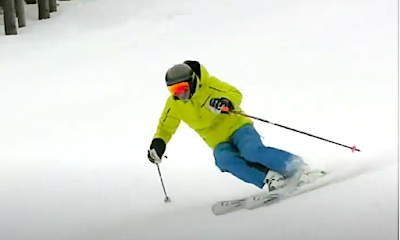Just a short history:
The transition in skiing has been misrepresented or not described correctly in ski literature since the beginning of time. In fact, in Warren Witherell's two books, it is never addressed at all. George Joubert, the French coach, in the late 60s and early 70s, wrote two books. In them he does address the transition, however his descriptions are incorrectly focused. I can make that statements because skiing at the highest levels has evolved differently from the way Joubert described it. Many so called ski technicians even today reference these books as the "gospel" never looking to evolve or properly analyze skiing after Joubert. Therefore ski teaching has stagnated since.
In this series I will explain and break down how 21st Century skiing works at the highest levels and how recreational, intermediate and advanced skiers can add significant improvements to their skiing enjoyment and performance. With these methods and approaches you will ski with more efficiency, control and ease, rather than fighting gravity. You will learn to enjoy relaxation and the ease of acquiring ski performance with less effort. Let's get into it!
The Transition
The Transition is the most complex part of ski turns and requires the biggest change in the body. In the transition, your lower body, from below the hips, moves downhill, and the upper body stays the same until the lower body engages the skis to the new edge angles. Once this is done, the upper body needs to move from one side to the other over you skis. Ideally, this is accomplished without a pivot or and effort to create direction change. Once in the arc or a turn, the movements are relatively simple and consistent with how you stand on the ski. The transition is the point at which, everything happens, all this
changes and you move from one ski to the other and from one turn to the other. The best free skiers and racers can get this done before they reach the fallen. Let's have a look at the basics.
For the first session of body movements in this series; I focus on lower the body.
 |
| Through the bottom of the turn continue building your angles to load the outside ski. Many skiers give up the turn too early and therefore are rushed, therefore never getting the lower body released. |
 |
| The red arrow is the movement to retract. The blue arrow is getting that ski released. The black arrow is where your balance and pressure goes when you create these movements. |
 |
| Now the tip of the ski is lifted, both knees are equally bent and the angles from the previous turn are gone. |
 |
| The red arrow is for continued action of bending and flexing. The yellow arrows are to indicate increased tipping. Never push against the outside leg, common error taught to skiers. |
 |
| In the turn, all is good. Keep a look out for the second article in the series where I address the upper body responsibilities in transition. |




I lover reading this stuff. so, well explained!!! Thank you!!!
ReplyDeleteTo build pressure and edge hold the best method is to increase your angles through more lower body tipping. This means moving the feet, ankles, and legs to a higher angle. This is described in all my books and videos. Pushing or extending the outside leg, only serves to stiffen the leg and create leaning.
ReplyDelete